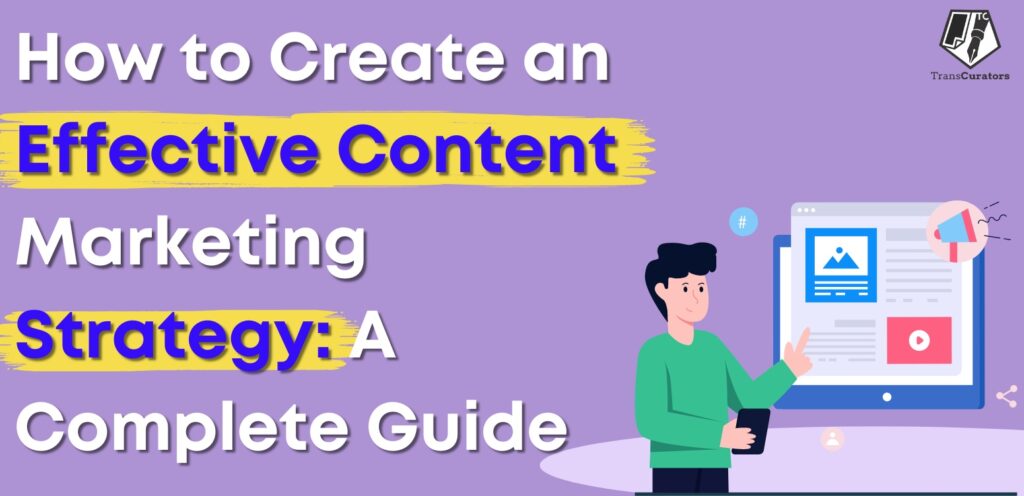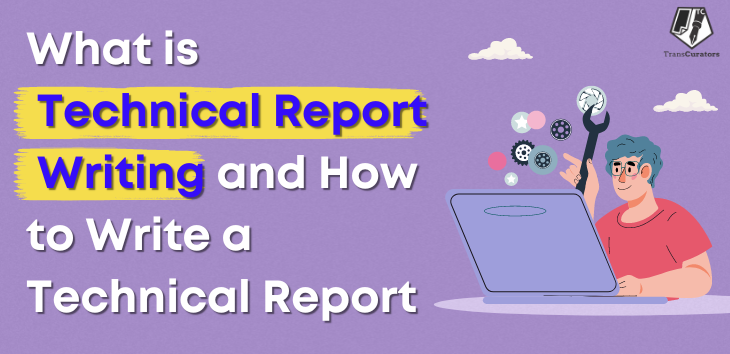
In today’s digital world, content marketing is an effective strategy for engaging customers and driving business success. However, developing a powerful content marketing plan requires more than simply posting blog posts and social media updates. Whether you’re an experienced marketer or a newcomer, developing a strategy that resonates with your target audience is essential for increasing engagement and growth. It requires a deep understanding of your target audience, defined goals, and a coherent plan that ties everything together. In this guide, we will explore actionable steps on how to create a content marketing strategy that not only captures attention but also converts interest into tangible results, Setting your brand distinct in a crowded market. Read on to discover the secrets of successful content marketing and start enhancing your strategy right away!
Why an Effective Content Marketing Strategy is Needed?
A successful content marketing plan is a necessity in the digital age. Businesses need to engage their target audience in a meaningful way, and content marketing offers a means to do so. Companies that create and share valuable content can build trust, engage their audience, and produce profitable customer actions.
- First and foremost, an effective content marketing plan allows you to connect with your audience. When you understand your clients’ wants and interests, you can develop content that appeals to them. This connection fosters loyalty and encourages repeat business. People are more likely to engage with brands that provide helpful information.
- More importantly, content marketing improves your web presence. Search engines, such as Google, prioritise websites that continually provide quality content. By using SEO (Search Engine Optimisation) strategies, your content can come up higher in search results, making it easier for potential customers to find you. This visibility is critical in attracting new visitors to your website.
- Content marketing also establishes your business as an industry leader. When you publish informative articles, how-to instructions, and expert comments, you exhibit your knowledge and experience. This credibility promotes trust among your target audience, making them more likely to choose your products or services over competitors.
- Furthermore, an efficient content marketing approach helps your sales funnel. Content can help potential customers navigate each stage of their buying journey. Blog posts and social media updates can boost brand recognition, while extensive product descriptions and case studies can assist potential customers in making informed purchasing decisions. You can improve conversion rates by addressing queries and issues in your content.
- Engaging content stimulates social sharing, which increases your reach. When individuals find your information useful, they are more willing to share it with their networks. This organic promotion might help your company approach new customers without spending additional advertising expenses. Social shares also signal to search engines that your content is valuable, which boosts your search ranks.
- Ultimately, content marketing can offer long-term benefits. Unlike traditional advertising, which ceases to generate results once paid for, content can continue to draw and engage individuals for years to come. A well-written blog post or educational video can continue to drive traffic and generate leads long after it was originally published.
Create An Effective Content Marketing Strategy: Step-by-Step Guide
Step 1: Define Your Goals
Begin by determining what you want to achieve with content marketing. Establish specific, measurable goals. Goals can involve increasing website traffic, generating leads, increasing revenue, or raising brand recognition. Make sure your goals comply with your overall business objectives. For example, if your company aims to increase sales by 20% over the next year, your content marketing goal might be to create a certain number of leads each month.
Step 2: Understand Your Audience
Understanding your audience is vital for creating content that resonates with them. Create comprehensive buyer personas that represent your ideal customers. Include demographic details like age, gender, location, and employment. Also, consider their hobbies, pain points, and buying behaviours. Gather insights via conducting surveys and interviews, as well as analysing customer data. Understanding your audience allows you to tailor your content to their needs and preferences.
Step 3: Conduct a Content Audit
Review your existing content to figure out what has worked and what hasn’t. Identify the gaps in your content library. Consider indicators like page visits, engagement, and conversion rates. This audit will help you discover the types of content your audience enjoys while highlighting areas for improvement.
Step 4: Choose Your Content Types
Decide which types of content you will generate. Some common kinds include blog posts, videos, infographics, ebooks, whitepapers, podcasts, and social media posts. Choose forms that are both relevant to your aims and appealing to your target audience. For example, if you want to educate your audience, comprehensive blog posts or how-to videos might be useful. Consider creating short movies or infographics for social media users.
Step 5: Develop a Content Plan
Create a content calendar to help you organise your content generation and delivery. Outline the themes you will cover, the types of content you will create, and the channels that you will use to distribute it. A content calendar allows you to stay organised and maintain a consistent publication schedule. It also helps you to schedule content around important dates and events relevant to your industry or your audience.
Step 6: Create High-Quality Content
Focus on creating high-quality, meaningful content. Your content should meet your audience’s demands and answer their problems. Use clear, captivating language, and incorporate images when needed. Ensure that your content is well-researched and provides fresh insights or opinions. Quality content fosters trust among your target audience and encourages them to interact with your brand.
Step 7: Optimise for SEO
Implement SEO-recommended practices to improve your content’s visibility in search engines. Conduct keyword research to determine what keywords your target audience is searching for. Use these keywords throughout your content, including titles, headers, and meta descriptions. Optimise photos using alt text and guarantee that your website loads quickly and is mobile-friendly. SEO contributes to organic traffic to your content.
Step 8: Promote Your Content
Promotion is vital for ensuring that your information reaches its intended audience. Share your content on social media, via email newsletters, and in relevant online groups and forums. Collaborate with influencers and industry partners to increase your reach. Use paid advertising to target particular audience segments, such as Google or Facebook advertisements. A strong promotion strategy helps to improve the effect of your content.
Step 9: Engage with Your Audience
Encourage users to participate and engage with your content. Respond to comments on your blog and social media posts. To start a conversation and get feedback, ask questions. Interacting with your audience builds a community around your brand and fosters loyalty. It also provides helpful insights into your audience’s preferences and opinions.
Step 10: Measure and Analyze Performance
Track and analyse the performance of your content regularly, utilising technologies such as Google Analytics and social media insights. Monitor traffic, engagement, lead generation, and conversion rates. Evaluate how effectively your content meets your objectives. Use this data to determine what’s effective and what isn’t. Adjust your content strategy based on these results to constantly improve your content marketing efforts.
Step 11: Refine and Adjust Your Strategy
Content marketing is a continuous process. Based on your performance analysis, refine your plan to increase its efficacy. Experiment with various content kinds, topics, and promotional strategies. Stay current with industry trends and respond to changes in your audience’s choices. A flexible approach enables you to adapt to new opportunities and challenges.
Step 12: Invest in Tools and Resources
Invest in tools and resources that can help you simplify your content marketing operations. WordPress and other content management systems can make creating and publishing content easier. SEO tools like Ahrefs or SEMrush can help with keyword research and performance tracking. Social media management tools like Hootsuite and Buffer can help you schedule and analyse your social media updates. Investing in the right tools will improve your productivity and effectiveness.
Step 13: Collaborate with Your Team
Content marketing often requires the collaboration of multiple team members, such as authors, designers, SEO professionals, and social media managers. Promote cooperation and communication within your team. Use project management tools like Trello or Asana to ensure everyone is on the same page. Regular team meetings assist in coordinating your efforts and ensure that everyone understands their roles and responsibilities.
Step 14: Stay Consistent
The secret to successful content marketing is consistency. Maintain a regular posting schedule and make sure your content corresponds with your brand’s voice and values. Consistent content assists in creating awareness and trust among your audience. It also informs search engines that your website is active, which can boost your SEO results.
Step 15: Focus on Quality Over Quantity
While it is important to generate content frequently, quality should never be compromised for quantity. Quality content that adds actual value to your audience will always outperform a high amount of mediocre content. Take the time to research, create, and polish each piece of content to make sure it matches your expectations and benefits the readers.
Step 16: Utilise User-Generated Content
Encourage the audience to pitch content to your brand. User-generated content (UGC), such as customer reviews, testimonials, and social media posts, can help you improve your content marketing approach. UGC adds authenticity and trustworthiness to your brand. Use user-generated content (UGC) on your website and social media platforms to emphasise satisfied customers and build a community.
Step 17: Repurpose Content
Repurpose your content into different formats to get the most out of it. For example, convert a blog post into an infographic, video, or series of social media updates. Repurposing content allows you to reach a wider audience while extending your content’s lifespan. It also saves time and resources while creating content.
Step 18: Keep Learning and Adapting
The digital world is continuously changing, so being informed on the newest trends and best practices in content marketing is critical. Join industry conferences, webinars, and seminars. Read blogs and listen to podcasts by content marketing professionals. Continuous learning guarantees that your strategy remains successful and competitive.
Read more- Understanding Content Marketing in the Digital Marketing World
Step 19: Foster Relationships with Influencers
Establishing connections with industry influencers can help your content reach a larger audience. Identify influencers whose audience is similar to your target market. Before you request collaboration, engage with their work, share their content, and establish a genuine relationship. Influencer collaborations can assist your brand in reaching more people and improving credibility.
Step 20: Develop a Long-Term Vision
Finally, think long-term. Content marketing is a long-term approach to developing relationships and generating sustainable growth. Create a vision for where your content marketing efforts will lead your company in the future. Set long-term goals and monitor your progress regularly. A clear vision helps to direct your efforts and keep you focused on your ultimate goals.
Following these steps, you can create a strong content marketing strategy that drives engagement, builds brand loyalty, and achieves your business goals. Remember that content marketing is an ongoing process that demands regular evaluation and adaptation to remain effective.
Conclusion
In conclusion, understanding how to develop a successful content marketing plan is critical for any organisation aiming to succeed in the digital age. A content marketing strategy guides businesses on how to attract, engage, and convert their target audience by providing quality and relevant content. By understanding what a content marketing strategy entails, you can strategically position yourself for sustained growth and success. The importance of content marketing lies in its ability to establish authority, credibility, and trust among consumers. With regular delivery of superior content that responds to the needs and preferences of your target audience, businesses can create significant connections and develop long-lasting relationships. To explore how TransCurators can assist in refining and implementing your content strategy, contact us today for personalised guidance and support. Whether you’re looking to enhance your internet visibility, increase sales, or promote brand loyalty, our tailored solutions can help you achieve your goals.



